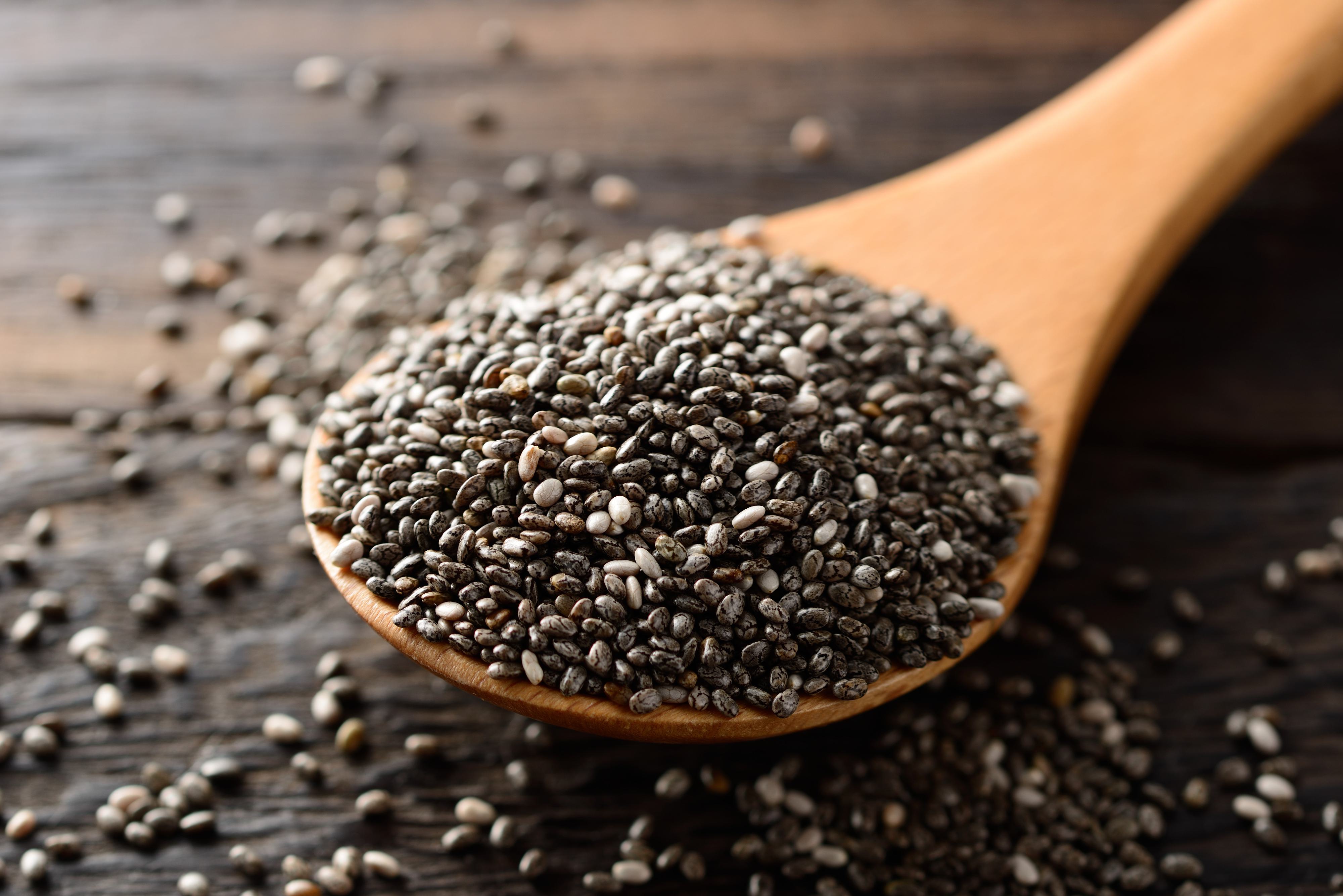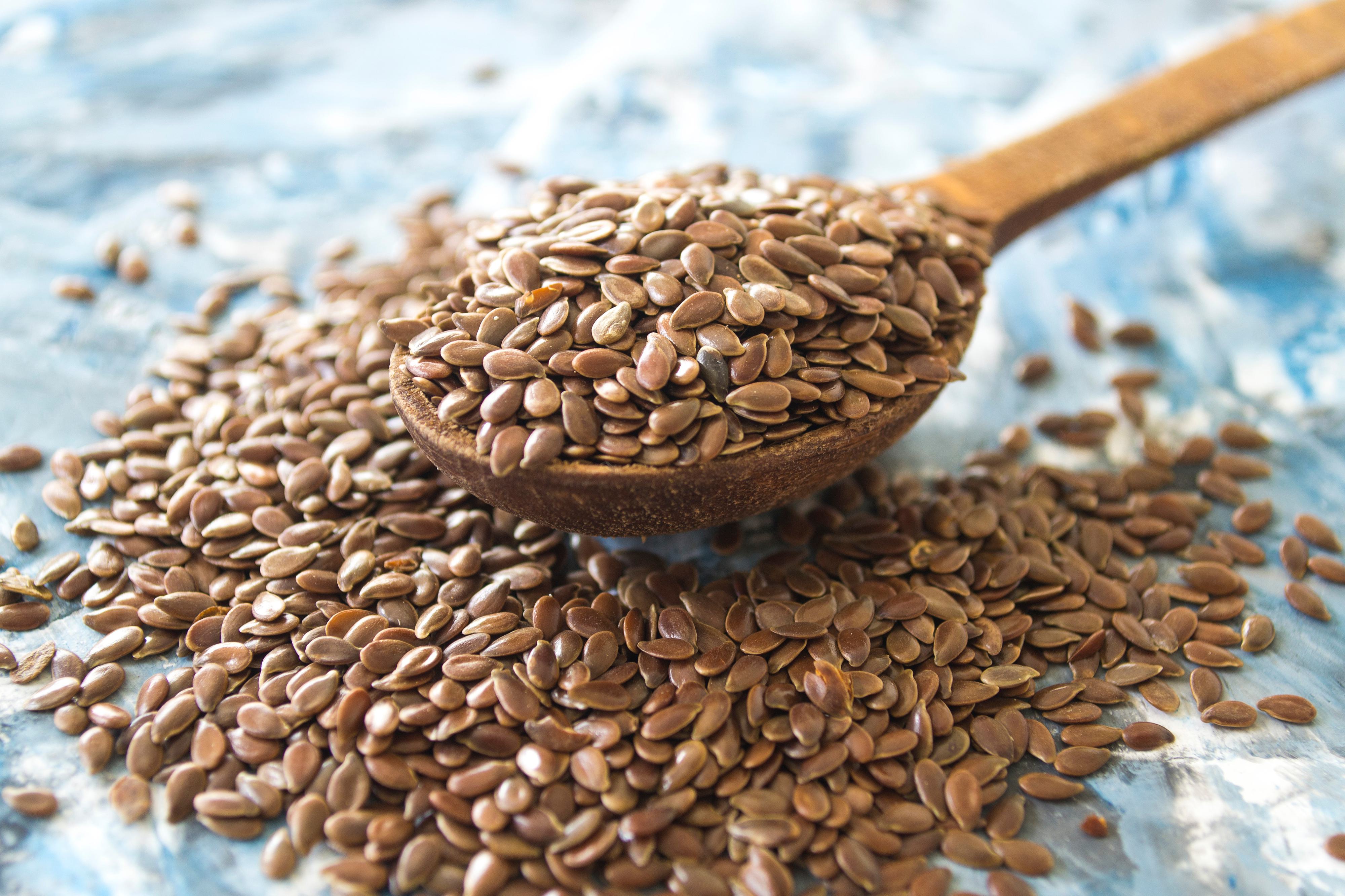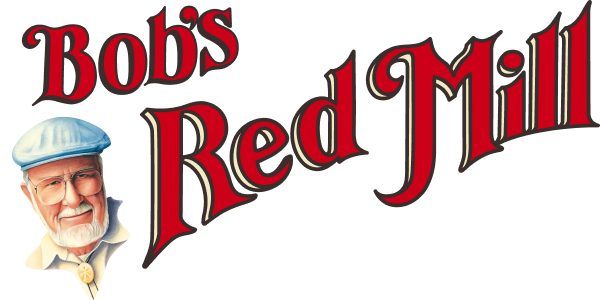In the world of superfoods and trendy new health foods, healthy seeds have become a major player over the last few years. There are hemp seeds, chia seeds, flaxseeds, and plenty more! The most popular are chia seeds and flaxseeds, which are both concentrated sources of nutrients that help increase human health. But how do you know which one is the best as a new addition to your everyday diet? We will help you, of course. Below, we have collected all of the research on the differences between
wholeflaxseedsand
chia seeds and compiled it side by side, so you can compare and contrast and make the best decision for yourself when it comes to healthy seeds!
So, what are chia seeds and flaxseeds really? We will break it down for you with a little bit of background on each to help you make your decision!
Chia Seeds vs. Flaxseeds
Chia seeds and flaxseeds are both seeds that are high in fiber and protein. Chia seeds are more bland, tasteless and round, while flaxseeds are more oval shaped and have a stronger, nutty flavor. There are some key differences other than taste and shape such as amount of fiber, omega-3 fatty acids, antioxidants, minerals and even cost or ease of access. We take a closer look into the key differences so that you can find out which seed will be a perfect nutritional supplement to leave you feeling your best!
What Are Chia Seeds?

Chia seeds are small, round seeds that originated as far back as Aztec times in Mexico and South America, although much of the commercial chia seed crop is now grown in Australia as well. These seeds come in black and white colors, although there is little nutritional difference between each color. This seed is actually related to the mint family, and according to Aztec legend, chia literally meant strength, as these seeds fueled the Aztec warriors through long days of battle. Chia seeds have surged in popularity since the early 2000s, after spending the 1980s and '90s mostly known via the tchotchke Chia Pet, which sprouts the seeds on a terra cotta animal or celebrity. These are also sometimes known as Salba seeds, so if you see that label, you are looking at chia seeds!
What Are Flaxseeds?

Flaxseeds are shaped more like pumpkin seeds, rather than round, but are also fairly small. They also come in two colors (brown and golden) and have been found in the human diet as early as 3000 BC in

Babylon. The story of flaxseeds does not involve Aztec warriors, but it does claim that King Charlemagne passed 8th-century laws requiring all of his subjects to consume flaxseed for the health benefits. Today, you can find flaxseed, also known as linseed, in many consumer products, and it is also commonly used to feed livestock such as chickens and cows so that their meat is higher in omega-3 fatty acids. Flaxseeds come from the flower of the plant and can be grown almost anywhere in North America, despite reportedly originating in Egypt.
Both of these seed varieties are small and both pack a surprisingly powerful nutritional punch for their size. Now let us explore the different pros and cons of each, to help you decide what is going to fit best with your daily diet.
Difference in Omega-3 Fatty Acids: Chia Seeds vs. Flaxseeds
Flaxseeds are the number one plant-based food for omega-3 fatty acids, with one ounce of flaxseed containing over 6,000 mg of ALA, a common omega-3. Omega-3s are important in the prevention of inflammation, diabetes, and autoimmune diseases, just to name a few, and are very important to our health. The same amount of chia seeds, in comparison, has only 4,900 mg of ALA. However, we say only with a grain of salt, as 4,900 mg is still a huge source of omega-3s, and compares to around 6 ounces of salmon. Both seeds contain mostly ALA, and neither is a significant source of DHA, which you need as well (and can get from fatty fish like salmon). So while flaxseeds win slightly in this category, you really cannot go wrong with either seed when it comes to omega-3 fatty acids.
Amount of Fiber: Chia Seeds vs. Flaxseeds
As with omega-3s, both chia seeds and flaxseeds are rich in fiber as well. Flaxseeds contain about 8 g of fiber in one ounce, as compared to chia seeds 11 g for the same amount. A diet high in fiber has been shown to prevent many critical diseases, such as diabetes, cancer, and heart disease. Not to mention, fiber is an excellent nutrient for stomach and digestive health, assisting with the flow of food from the stomach to the intestines and keeping everything in that region smooth and painless. Chia seeds specifically form a gel during digestion, which blocks the fiber from releasing sugars and makes chia seeds a great carbohydrate alternative for people with diabetes. Chia seeds are a clear winner here, but you will not go wrong with flaxseeds either.
Lignans in Flaxseeds
Flaxseeds are also a great source of lignans, an antioxidant also known as phytochemicals. These antioxidants help with the appearance of skin and a reduction in blood pressure. Although chia seeds are also rich in antioxidants, only flaxseeds contain high levels of lignans, so that's another point for flax! This is especially true if you are menopausal or approaching menopause, as lignans specifically have shown to reduce the harsh symptoms of menopause.
Antioxidants: Chia Seeds vs. Flaxseeds
Chia seeds have a more varied palette of antioxidants that may help prevent aging and diseases like cancer. Though weaker in lignans specifically, chia seeds win in other antioxidant properties. In fact, chia seeds are higher in antioxidants than other sources, such as acai and blueberries. Some studies have suggested that the darker chia seeds are about twice as rich in antioxidants as the white chia seeds, but experts still recommend a mix of the two colors for the most balanced diet.
Calcium in Chia Seeds
This one will definitely be another point for chia seed. Calcium is extremely vital to a well-balanced diet, as it increases bone health and strength, especially as you get older. Chia seeds are a significant source of calcium, while flax seeds are not. As a bonus, chia seeds are rich in minerals like manganese, phosphorus, and zinc, which also improve bone health over time. For healthy bones, we will have to give another point to the chia seed team!
Amount of Protein: Chia Seeds and Flaxseeds
Both chia seeds and flaxseeds are significant sources of protein. Protein is critical, especially for weight loss, as it helps you feel fuller after a meal and not crave snacks between meals. In fact, one study showed protein-rich diets cut down on midnight snack cravings by over 50%. Protein also helps you build muscle and is a boost of energy to keep you going through your workout and the rest of your day! Chia and flax seeds both help with this, although flaxseeds are slightly higher at 8 g of protein per ounce, compared to chias 6 g of protein per ounce. We will give the point to flaxseed, but only barely.
Chia Seeds: Vitamin and Mineral Content
Chia seeds are full of vitamins and minerals! Zinc, copper, phosphorus, manganese, magnesium, and potassium are not even all of the vital minerals that you will find in chia seeds. Flaxseeds have a similar profile, with high amounts of B6 vitamins, iron, copper, and manganese as well. Chia seeds fare slightly better, but this will depend somewhat on the vitamins and minerals that you are consuming in the rest of your diet. If you have an iron deficiency, go with the flaxseeds. If you need more calcium, chia seeds are for you!
Buying Chia Seeds vs. Flaxseeds: Ease of Access
There are a few considerations when regarding ease of access to flaxseeds or chia seeds. Both are easily found in local health stores or online stores, for instance here on our website. Chia seeds are sold whole, in chia bran, ground, or in oil. Flaxseeds are almost always sold whole, but can also be sold pre-ground as flaxseed meal. The main difference here is that flaxseeds must be consumed ground, whereas chia seeds can be consumed in any form. This is not to say that whole flaxseeds are dangerous to your health, simply that they will not digest in your stomach if they are not first ground, cracked, or broken open at the very least. Therefore, the nutrients will not be absorbed by your system. This does not apply to chia seeds, which are slightly more nutritious ground or soaked, but still maintain almost all of their nutritional value even in whole form.
Flaxseeds go rancid over time if exposed to heat, light, or air. Therefore, it is suggested to keep them in a dark container in your refrigerator and eat them fairly quicklywithin six months for the best results. If you buy your flax seeds pre-ground, then they will go rancid more quickly. Chia seeds, on the other hand, do not go rancid due to their antioxidant makeup, so they have a much longer shelf life and can last for up to a year in a cabinet, if necessary. Chia seeds can also be sprouted to create a different type of ingredient, a delicious complement to salads or sandwiches.
How to Use & Eat Chia Seeds vs. Flaxseeds
As far as eating, both foods are relatively similar once you get past the ground vs. whole debate. The typical serving of each is the sameabout 25 grams or 2 tablespoons, two times a day. Ground chia seeds or
ground flaxseeds are commonly sprinkled over oatmeal or pudding, blended into shakes and smoothies, or mixed into other dishes. Both can be used as an egg substitute when mixed with water, although more experts recommend this for chia seeds than for flaxseeds, due to its gel-like consistency when mixed with water.
Both ground seeds can be used to substitute for part of the flour in various recipes, but this is much more commonly done with flaxseeds than chia seeds. Many products you use today actually already include flaxseeds, such as waffles and pancake mixes! We will give a very slight point to flaxseed in this category, as they are much more common in everyday foods at this point!
Cost of Chia Seeds Compared to Flaxseeds
Cost is about one of the only things that have a clear winner here. Chia seeds are still growing in popularity and are significantly more expensive than flaxseeds at this time.
Flavor of Flaxseeds vs. Chia Seeds
For flavor, the points will depend on what you are looking for from these foods. Flaxseeds have a much stronger flavor and are slightly nutty. If you enjoy this flavor or are looking for an ingredient to add flavor to your meals, then flaxseeds would be an excellent choice. However, if you are simply looking for a health boost without changing the flavor of your meal, then chia seeds would be the one to choose. Chia seeds are bland and almost tasteless, especially in a powdered format, so you can add them to a plethora of recipes and dishes without even noticing a difference!
In conclusion, we believe that both flaxseeds and chia seeds are delicious, healthy additions to your diet. To add up the points, we ended at four to four, with a couple categories depending highly on preference (and we promise it was not rigged for a tie!). If you are looking for a boost in omega-3s, trying to increase your protein intake, or are coming up on menopause soon, then flaxseeds are a definite choice for you. If you prefer something with a more well-rounded variety of nutrients, then chia seeds are probably the right seed to add to your pantry.

You can easily try out both and let us know below what you think. It is no doubt that both of these seeds pack a huge number of powerful nutrients into a deceivingly small package. Tell us in the comments below what you think of chia seeds and flaxseeds!
Download Your $1 off Chia Seeds or Flax Seeds
Coupon Today
DOWNLOAD NOW



 Chia seeds are small, round seeds that originated as far back as Aztec times in Mexico and South America, although much of the commercial chia seed crop is now grown in Australia as well. These seeds come in black and white colors, although there is little nutritional difference between each color. This seed is actually related to the mint family, and according to Aztec legend, chia literally meant strength, as these seeds fueled the Aztec warriors through long days of battle. Chia seeds have surged in popularity since the early 2000s, after spending the 1980s and '90s mostly known via the tchotchke Chia Pet, which sprouts the seeds on a terra cotta animal or celebrity. These are also sometimes known as Salba seeds, so if you see that label, you are looking at chia seeds!
Chia seeds are small, round seeds that originated as far back as Aztec times in Mexico and South America, although much of the commercial chia seed crop is now grown in Australia as well. These seeds come in black and white colors, although there is little nutritional difference between each color. This seed is actually related to the mint family, and according to Aztec legend, chia literally meant strength, as these seeds fueled the Aztec warriors through long days of battle. Chia seeds have surged in popularity since the early 2000s, after spending the 1980s and '90s mostly known via the tchotchke Chia Pet, which sprouts the seeds on a terra cotta animal or celebrity. These are also sometimes known as Salba seeds, so if you see that label, you are looking at chia seeds!
 Flaxseeds are shaped more like pumpkin seeds, rather than round, but are also fairly small. They also come in two colors (brown and golden) and have been found in the human diet as early as 3000 BC in
Flaxseeds are shaped more like pumpkin seeds, rather than round, but are also fairly small. They also come in two colors (brown and golden) and have been found in the human diet as early as 3000 BC in  Babylon. The story of flaxseeds does not involve Aztec warriors, but it does claim that King Charlemagne passed 8th-century laws requiring all of his subjects to consume flaxseed for the health benefits. Today, you can find flaxseed, also known as linseed, in many consumer products, and it is also commonly used to feed livestock such as chickens and cows so that their meat is higher in omega-3 fatty acids. Flaxseeds come from the flower of the plant and can be grown almost anywhere in North America, despite reportedly originating in Egypt.
Both of these seed varieties are small and both pack a surprisingly powerful nutritional punch for their size. Now let us explore the different pros and cons of each, to help you decide what is going to fit best with your daily diet.
Babylon. The story of flaxseeds does not involve Aztec warriors, but it does claim that King Charlemagne passed 8th-century laws requiring all of his subjects to consume flaxseed for the health benefits. Today, you can find flaxseed, also known as linseed, in many consumer products, and it is also commonly used to feed livestock such as chickens and cows so that their meat is higher in omega-3 fatty acids. Flaxseeds come from the flower of the plant and can be grown almost anywhere in North America, despite reportedly originating in Egypt.
Both of these seed varieties are small and both pack a surprisingly powerful nutritional punch for their size. Now let us explore the different pros and cons of each, to help you decide what is going to fit best with your daily diet.
 You can easily try out both and let us know below what you think. It is no doubt that both of these seeds pack a huge number of powerful nutrients into a deceivingly small package. Tell us in the comments below what you think of chia seeds and flaxseeds!
You can easily try out both and let us know below what you think. It is no doubt that both of these seeds pack a huge number of powerful nutrients into a deceivingly small package. Tell us in the comments below what you think of chia seeds and flaxseeds!